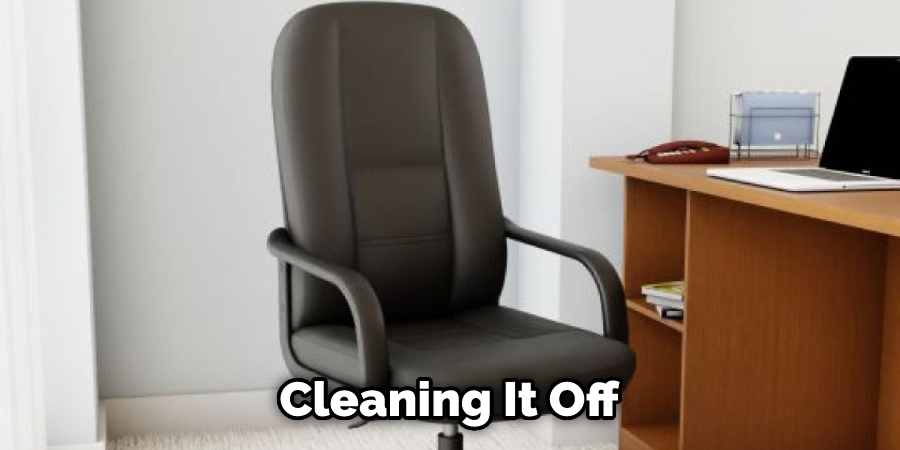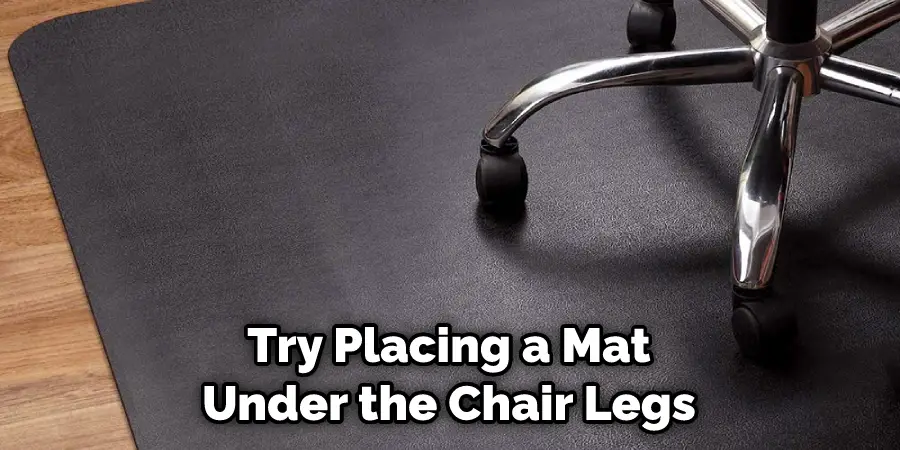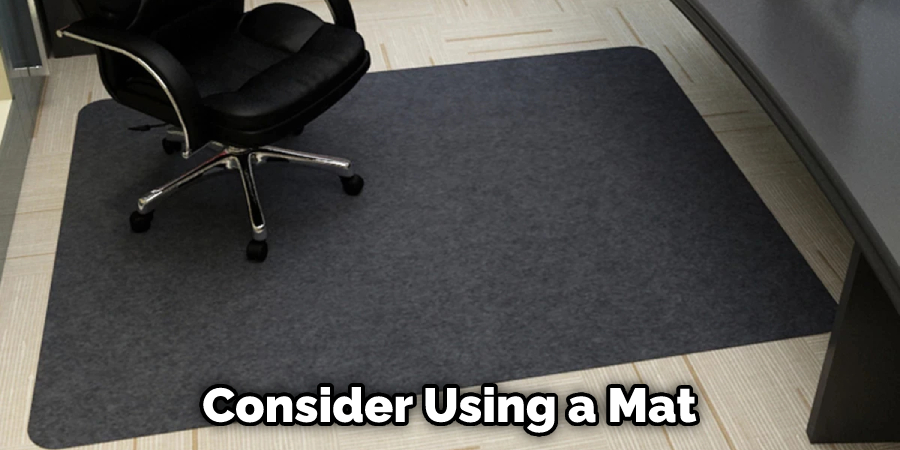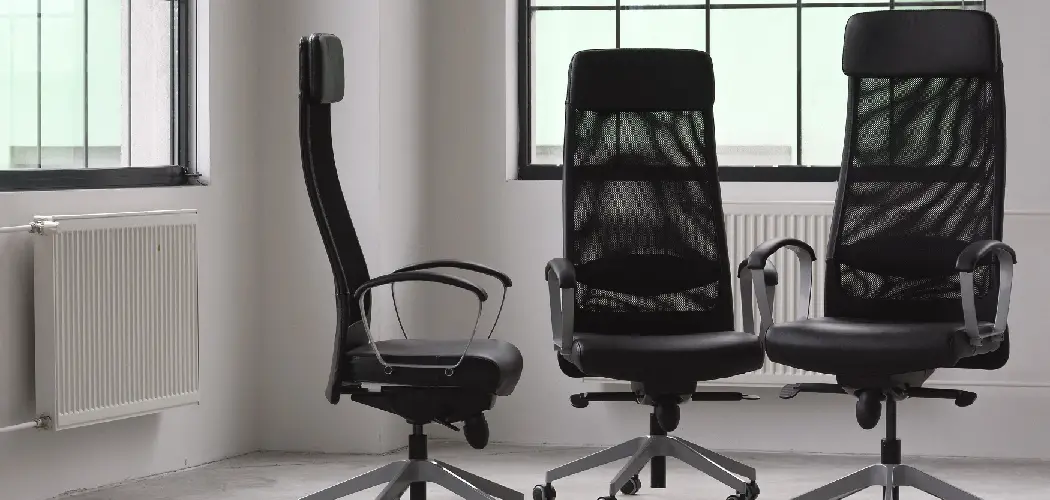Office Chair From Sliding is a common problem that various factors can cause. The most common cause is improper seating posture, which puts pressure on the back of the chair and causes it to slide forward. Other causes can include loose bolts or wheels, worn-out carpets, or even a slippery floor.

If you have an office chair that slides around when you sit in it, it can be frustrating and make it difficult to get work done. You can do a few things to stop your office chair from sliding, including adjusting the Chair legs, using furniture pads, or placing a rug under the Chair.
You can make your office chair more stable and functional with a little effort. In this blog post, You will learn in detail how to stop office chair from sliding.
Why Should You Fix Your Sliding Chair?
A sliding chair can be dangerous as it can cause you to fall out of the seat and hurt yourself. It is also a nuisance as it makes it difficult to get work done when you constantly have to adjust your position. If you have a sliding office chair, it is important to take steps to fix the problem so that you can avoid injury and be more productive.
Step by Step Processes for How to Stop Office Chair From Sliding
Step 1: Locate the Area That Is Sliding
If your office chair is sliding backward, the first thing you’ll need to do is identify the area that is causing the problem. This is usually the part of the chair that comes into contact with the floor, and it may be made of different materials depending on the type of chair you have.
If you can’t identify the area that is sliding, try moving the chair around until you find the spot that is giving you trouble.
Step 2: Inspect the Area for Wear and Tear
Once you’ve located the sliding area, take a close look at it to see if there are any signs of wear and tear. If the material is worn down or damaged in any way, this could cause your problem. In some cases, you may be able to fix the issue by simply replacing the worn-out part.
Step 3: Clean the Area
Even if there doesn’t appear to be any damage to the sliding area, cleaning it off is a good idea before taking further steps. This will help you to get a better idea of what the problem might be, and it could also solve the issue if there were simply something preventing the chair from moving smoothly.

Step 4: Apply a Dry lubricant
If cleaning the area doesn’t solve the problem, the next step is to try a dry lubricant. This will help to reduce friction and make it easier for the chair to move. There are a variety of lubricants that you can use, but make sure to choose one designed for furniture use.
Step 5: Apply a Wet lubricant
If the dry lubricant didn’t work or you can’t find one, you can try using a wet lubricant instead. This type of lubricant will create a barrier between the chair and the floor, making it easier for the chair to move. Again, make sure to choose a furniture-safe lubricant.
Step 6: Use Tape
If you’re still having trouble, you can try using tape to create a temporary fix. Place the tape over the sliding area, which will help keep the chair in place. You can use any type of tape, but clear or duct tape will work best.
Step 7: Use Sandpaper
If the previous steps haven’t worked, sandpaper can rough the sliding area. This will help to create more friction so that the chair doesn’t move as easily. Just be careful not to damage the chair with sandpaper.
Step 8: Use Nail Polish
This may sound like an odd solution, but it can actually work quite well. Apply a thick layer of clear nail polish to the sliding area, which will help keep the chair in place. Just be sure to let the polish dry completely before using the chair.
If you want a more permanent solution, use furniture grippers. These are small pads that you attach to the bottom of the chair, and they will help to keep it from sliding. You can find furniture grippers at most hardware stores.

Tips for How to Stop Office Chair From Sliding
- Inspect your office chair regularly for wear and tear.
- Make sure that all casters and wheels are in good condition.
- Keep your office chair clean and free of debris.
- Adjust the height of your office chair to fit your needs.
- Choose an office chair with a five-point base for stability.
- Use an office chair with locking casters or wheels.
- Consider using an anti-slip mat under your office chair.
- Ensure that the floor around your office chair is clean and free of obstacles.
- Avoid standing on your office chair.
- Follow all manufacturer’s instructions for your office chair.
Can You Lock the Wheels on an Office Chair?
If you’re looking for a way to keep your office chair from sliding around, one option is to lock the wheels. This can be a simple and effective way to keep your chair in place, and it’s relatively easy to do. In most cases, all you need to do is find a small lever or knob on the underside of the chair, and flip it to the “locked” position.
Of course, not all office chairs have this feature, so it’s worth checking before you buy. And even if your chair has locking wheels, remember that they may not work on all surfaces. You can try a few other things if you’re struggling with a sliding office chair.
Ultimately, the best way to keep your office chair from sliding around is to choose a model that fits your needs and is designed for your specific workspace. With a little bit of research, you should be able to find a chair that will stay put, even on the slickest of surfaces.
Is It Necessary to Call Any Professional to Stop Office Chair From Sliding?
If your office chair is sliding around on the floor and you’re finding it difficult to keep it in place, you can do a few things to stop it from sliding. You may be able to fix the problem yourself without having to call a professional.
First, check the legs of the chair to see if they’re even. If one leg is shorter than the others, the chair will rock back and forth and be difficult to keep in place. You can try to adjust the legs, so they’re even, or you can put something under the short leg to level it out.
Second, check the floor surface where the chair is sliding. If it’s smooth, like tile or hardwood, there’s not much you can do to stop the chair from sliding. However, if the surface is carpeted, you can try placing a mat under the chair legs to grip the floor and keep the chair in place.

If neither of these solutions works, or if you’re just not comfortable adjusting the chair yourself, you can always call a professional to help you out. They’ll be able to fix the problem quickly and get your chair back to being stationary.
How Much Will It Cost if You Hire a Professional?
If you’re unsure how to fix your office chair on your own, you may wonder how much it will cost to hire a professional. The cost of hiring a professional can vary depending on the extent of the problem and the type of repair that is needed.
You will need approximately $200 for materials and an additional $100 for labor. The grand total will be $300. You may be able to save money by fixing the problem yourself, but it is best to consult with a professional before attempting any repairs.
Conclusion
The main issue with an office chair sliding is that it can be very dangerous. You could fall and hurt yourself if the chair slides out from under you. Additionally, if the chair slides while sitting in it, you could have a very sore back. There are a few ways to stop your office chair from sliding, and we will discuss some of them here.
One way to stop your office chair from sliding is to use a mat. A mat will provide traction for the chair, and it will also protect your floor. If you have hardwood floors, you may want to consider using a mat with a soft surface, such as a carpet mat.

Additionally, you can use mats that have spikes on the bottom. These will grip the floor and keep the chair from sliding. I hope this article has been beneficial in learning how to stop office chair from sliding. Make Sure the precautionary measures are followed chronologically.

